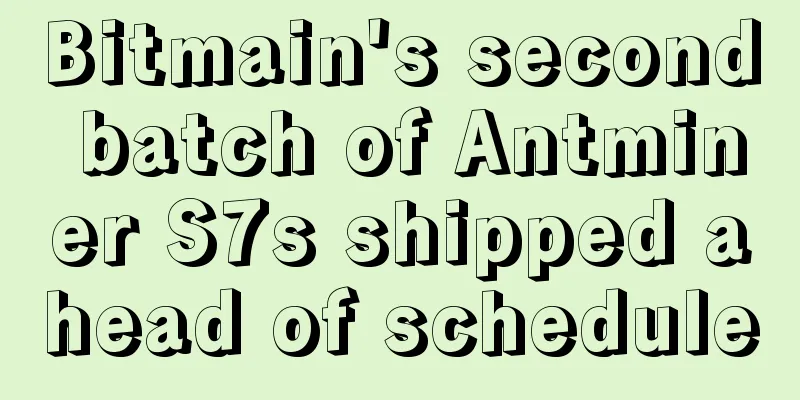In 2020, multiple Ethereum indicators hit record highs! These factors are worth paying attention to

|
Original title: "In-depth丨2020, 10 Ethereum indicators have reached historical highs! " BTC’s narrative as digital gold and the “fastest horse” as an inflation hedge is beginning to gain traction among investors . As a result, the asset has sparked a new wave of institutional interest, driving prices to new highs. Legendary fund managers such as Paul Tudor Jones and Stan Drunkenmiller began to pour money into the asset. Meanwhile, Square, Mass Mutual, and MicroStrategy became the first companies to hold BTC on their balance sheets. While the ETH community hosted DeFi Summer 2020, which was characterized by an explosion of interest and capital invested in decentralized finance and unlocked new distribution mechanisms for the ownership economy, this craze was largely internal to the community. As of now, the price of ETH is still down more than 50% from its ATH. However, the Ethereum economy performed well this year. It is worth emphasizing that the ecosystem has experienced exponential growth across the board, starting with the launch of Ethereum 2.0 and the DeFi yield farming boom. Dozens of Ethereum indicators reached new highs this year. Here are ten Ethereum charts that hit ATHs in 2020: 1. Ethereum utilization hits record high Data source: Etherescan Network utilization is arguably one of the most fundamental metrics for measuring the health of any public blockchain . In simple terms, it translates into demand for block space. It means people are actually willing to use (and pay for) the ledger as a settlement layer. The demand for Ethereum block space has reached its limit. The demand to use Ethereum is so great and constant that the utilization of the network is at the top and it really can’t go any higher. Whether lending capital on Aave or Compound , exchanging tokens on Uniswap , trading derivatives on Synthetix, launching a DAO, or sending USD stablecoins to anyone in the world, there is always a huge demand for Ethereum as the settlement layer for the decentralized economy . Now, Ethereum needs to scale. Whether it comes from second-layer solutions like optimistic rollups or the upcoming upgrade Ethereum 2.0, the network has reached a point where demand for block space is excessive and it needs to increase capacity to realize its full potential. 2. Ethereum Hashrate hits a record high Data source: The Block Despite the upcoming transition to PoS, Ethereum's hashrate has climbed to new highs. In other words, the network is more secure than ever . According to data from The Block, Ethereum's current hashrate has exceeded 271 TH/s, surpassing its all-time high of about 240 TH/s in September 2018, which was reached during the bear market. With the difficulty bomb set for July 2021, miners are trying to mine all the remaining ETH before their mining equipment is "bricked". But whether the community needs to postpone the difficulty bomb again is another question. Even if all Ethereum 2.0 phases are worked on in parallel, which should make the rollout much faster than the initial Phase 0, it still seems unlikely that the network will move to PoS within the next six months. 3. ETH options open interest hits all-time high Data source: Skew Options open equity is the total outstanding value of unexercised options. Ethereum’s open equity is approaching $1 billion. While this is still relatively small in the grand scheme of things, it does give us some important insights about the network. Nic describes this elegantly in his article: Just as derivatives first emerged to allow farmers to hedge the risk of their crops and lock in a specific price for their harvest (and get liquidity for future crops so they can buy seeds and fertilizer today), options are useful for the producers of Bitcoin - miners. Miners can roughly estimate how many Bitcoins they will mine based on their equipment and reasonable assumptions about the computing power. If they want to get an "advance payment" for the expected mining coins, they can sell a call. This means that they promise to deliver the token at a certain price on a certain date - but they can get paid for this promise today. And with this cash advance, they can finance operations more efficiently. What this chart tells me is that Bitcoin producers now have access to more sophisticated financial products that they can use to hedge their risk. In theory, this should mean that the mining industry is more stable and less affected by boom and bust periods. This allows miners to focus on running their operations efficiently and frees them from the burden of worrying about the unhedged risk of their equipment. In the same light, the development of Ethereum options could make miners’ operations more efficient by enabling them to hedge against volatility risk and fund their operations by selling call options. Additionally, options markets allow traders to express their outlooks more creatively, giving market participants more tools that can naturally support more capital inflows. All in all, $1 billion in open stake is a positive sign for the network and the growth of financial instruments available to all market participants . 4. The number of DeFi users has reached an all-time high Data source: Dune Analytics At the beginning of this year, the number of DeFi users was less than 100,000, but then it went parabolic and the number of users of all protocols exceeded 1 million . It should be noted that the "DeFi users" here are actually just unique valid addresses, so the actual number is likely reported. Regardless, this chart speaks for itself, the number of unique wallets interacting with DeFi has completely vertically increased - and we all know why. The introduction of yield farming sparked a brief period of frenzy in the Ethereum ecosystem . And it quickly became even more frenetic. At its peak, there were new yield farming activities every day, endless liquidity mining activities, and waves of degens connecting to Pool 2, but being destroyed within a few hours. This was reminiscent of the ICO era, when new tokens were launched every day, promoting the promise of bringing billions of users into cryptocurrency. But it’s not all bad. The crypto industry has unlocked a valuable distribution mechanism that could have a profound impact on how equity is distributed in the future. The point? Giving ownership to those who provide and create the most value: the users. Platforms like Facebook, Youtube, Twitter, Uber, and Airbnb don’t really create value on their own. They rely on individuals and network effects. Every person who uses these platforms makes it more and more valuable. Whether it’s creating video content for the global population or giving strangers rides across town, these multi-billion dollar platforms rely entirely on individuals to generate value. People don’t go to Facebook to read Facebook content, and they don’t stay in Airbnb homes. It all depends on the individual. So why not give them ownership of the platform as well? This is what DeFi pioneered with yield farming. Individuals provide valuable services to the network (like providing funds to Compound) and gain ownership of the protocol in return. It’s not hard to imagine a future where Uber drivers receive a portion of equity for every ride they take, or Airbnb hosts receive a portion of equity for every guest they host. 5. The total locked value is at a historical high Data source: Debank Along with the surge in wallets, the total value locked (TVL) has also seen a massive surge, which can also be partially attributed to the craze for yield farming. At the beginning of the year, the value held across all protocols was approximately $600 million. But it wasn’t until February that the sector reached unicorn status. Fast forward to the end of the year, and the value locked in DeFi is sitting at well over $15 billion — easily a 25x increase in a single year. As mentioned earlier, the growth in value locked in DeFi was largely driven by the yield farming frenzy throughout June and September . Spurred by Compound’s COMP Token, capital began pouring into emerging (and sometimes unaudited) DeFi protocols as investors earned astronomical passive income returns. 6. DEX volume hits record high Data source: The Block The rise of decentralized exchanges (DEX) has been one of the most notable stories of this year . While they have been one of the most popular use cases for Ethereum, they have historically performed below expectations. Clunky interfaces, slow transaction speeds, and a host of other issues plagued the first Ethereum DEXs. If you’ve been around the project, you probably remember trading altcoins on EtherDelta. Since then, things have changed dramatically. As a result of the DeFi Summer, DEX trading volumes have soared in 2020 and peaked at over $25 billion in September alone. Even better, these crypto-native exchanges have gained a significant advantage over centralized exchanges (CEXs), as DEX trading volumes have reached up to 15% of the market share of their centralized counterparts - a significant jump from the <1% average in 2019. Uniswap, Curve , and Balancer are all major movers and shakers in this space. But so far, Uniswap is the dominant player. Constant product AMMs account for nearly 60% of all DEX volume , while other products support low ten-digit dollar volumes. The space has made significant progress over the past few years, which is a promising sign to see DEXs truly compete with centralized exchanges. After all, it should be hard to keep up with the permissionless, global nature of Ethereum’s financial protocols . This is especially true for projects like Uniswap when it comes to supporting the long tail of assets on Ethereum. Any ERC20 token can be listed instantly - no jumping, no listing fees, no extra operations. It’s a level playing field because everyone has to play by the same rules. All you have to do is deposit initial liquidity, and anyone and anywhere can access the token - whether it’s trading or liquidity provisions. As a result, GoliATHs like Coinbase and Binance are significantly faster at listing new tokens. This is evident with Sushiswap’s SUSHI on Binance and more recently The Graph’s GRT on Coinbase both being listed on the same day. And perhaps one day we’ll see CEXs start leveraging liquidity protocols to trade, rather than building their own infrastructure. 7. BTC’s influence on Ethereum hits an all-time high Data source: BTC on Ethereum There are now more than 3.3 billion USD worth of BTC circulating in the Ethereum economy, accounting for 0.675% of all BTC in existence. Similar to everything else in DeFi, this number has gone parabolic due to the yield farming craze. People can no longer just leave their BTC unused. Instead, they choose to take advantage of any of the dozens of high-yield passive income opportunities that DeFi offers. It's simply too good to resist. Whether becoming a liquidity provider on Curve or Uniswap, or depositing it on platforms like Compound and Aave, Ethereum’s decentralized economy offers BTC holders multiple ways to earn passive yield in a non-custodial manner, which is consistent with the core cypherpunk philosophy . This is in stark contrast to the options for BTC holders, where depositors would have to rely on centralized lenders like BlockFi or Celsius to earn a yield. Even better, there are more wrapped forms of Bitcoin on Ethereum than ever before. While wBTC has historically dominated the asset class, the ecosystem now has more options, including renBTC, tBTC, sBTC, and a few others. I doubt this is a trend that will end anytime soon. Ethereum will only have more ways to leverage your funds in the future, and BTC holders will have more wrapped Bitcoin options to choose from. That said, it’s only a matter of time before we see it slowly creep up to 1% or even higher. 8. Grayscale’s ETH holdings hit a record high Data source: The Block Grayscale is becoming a black hole for crypto assets. Not only does the company hold 2.5% of all BTC, they have also increased their ETH position to 2.3% of this year's supply (about $1.7 billion) through its $ETHE investment product . The asset's daily trading volume has also reached an all-time high, with an average daily trading volume of more than $24.6 million in November - far higher than its previous record of $15.6 million in August 2020. But here’s a small tip. While the surge in Grayscale’s Ethereum product is a good sign, the main interest from institutions (who are necessary to mint “shares”) is likely to be to take advantage of the high premiums on $ETHE, rather than using it for any meaningful long-term investment position. For reference, $ETHE is currently trading at a premium of 132% - a decent return for ETH locked up for 6-12 months. Regardless, the rise in $ETHE does provide institutional and accredited investors with an opportunity to get involved in Ethereum. They have 6 months to wait for the asset to flip and earn a premium, so we can only imagine that at least some of these investors will eventually go down the rabbit hole and start digging into their investment and understanding what Ethereum is. 9. Stablecoins on Ethereum hit all-time highs Data source: CoinMetrics The Cambrian explosion of DeFi is only possible with the growth of stablecoins, or “USD stablecoins,” on Ethereum . Over the past two years, these USD-pegged assets have flourished in the ecosystem and now represent nearly $20 billion in value on the network. But in 2018, stablecoins barely existed outside of Tether (USDT). Now, there are dozens of different types of USD stablecoins, from currency-backed to algorithmic. And it doesn’t look like this trend is slowing down. Since these synthetic dollars can be publicly accessed by anyone with an internet connection, Ethereum greatly increases the dollar’s influence over more users around the world. The recent events in Venezuela are a great example. Circle, the institution behind USDC, partnered with the Bolivarian Republic of Venezuela and Airtm to provide aid to Venezuelan frontline medical workers using USDC. With the cooperation of multiple actors, including the U.S. government, they were able to circumvent Maduro’s capital controls on the domestic financial system. As a result, they were able to put millions of dollars into the hands of those fighting for the health and safety of the Venezuelan people. This really shows the power of embracing public blockchains. The U.S. and other nation-states can circumvent restrictions imposed by foreign jurisdictions and expand their reach and influence by leveraging these permissionless platforms, rather than fighting against them. 10. ETH in deposit contracts hits record high Data source: Dune Analytics This last chart is a bit of a cheat, as it can only go up now. Nevertheless, ETH became the first internet bond to reach unicorn status shortly after the launch of the Ethereum 2.0 deposit contract. The contract currently holds more than 1.5% of the total ETH supply, representing more than $1.1 billion in value, securing Ethereum’s eventual public chain. While it’s still early days, the influx of capital into the contract signals that the Ethereum community is collectively behind advancing this new frontier of decentralized, scalable blockchains . The best part is that the infrastructure built around Ethereum 2.0 will only grow. Whether it’s major exchanges like Coinbase or Binance supporting ETH staking, the launch of decentralized staking providers like Rocket Pool, or better plug-and-play hardware solutions for individuals, participating in Ethereum 2.0 validation will only become more convenient in the future. Looking ahead While BTC is celebrating new price highs, Ethereum has a lot to celebrate as well. A range of indicators from fundamentals to narratives are showing Ethereum’s adoption as the global settlement layer for the Internet of Value. The decentralized economy is being built day by day, and there is a lot of progress to prove it. Consider that the DeFi industry barely existed two years ago. Now, there is over $15 billion in funding to power powerful financial applications and $20 billion in tokenized dollars — all of which can be accessed by anyone with an internet connection. While I highlighted these ten, there are many other metrics breaking new records across the Ethereum economy . NFTs and digital art have reached seven-figure transaction volumes, and crypto-native financial primitives like flash loans are now surging into multi-billion dollar volumes. There are some entry points: Ethereum is growing . And there are also fundamental catalysts to support this growth. Ethereum 2.0 is progressing smoothly, CME recently announced that they will support ETH futures in 2021, and Jerome is also warming up the printing press for a new round of stimulus policies. Will ETH reach a new all-time high next? |
<<: Inventory | What did DeFi experience in 2020?
>>: In the week after Christmas over the years, does Bitcoin fall or rise?
Recommend
Mole analysis: What does a mole on the sole of the foot mean?
Everyone will have some moles on their body, and ...
Bitcoin maintainer Wladimir: Striving forward in confusion and bewilderment
I’m very happy to be doing my job, working with s...
What does a woman without a nose look like? What is her facial features, personality and fortune like?
In terms of appearance, a high nose is naturally ...
Men's health can be seen from palmistry
How can we tell if there is disease? 1. Dark purp...
How to read a woman's forehead
The forehead (forehead) specifically represents: ...
Saudi Arabia and UAE leaders confirm plans to launch digital currencies
The leaders of Saudi Arabia and the UAE have conf...
Is it good to analyze girls with big eyes from the perspective of face reading?
Is it good to analyze girls with big eyes from th...
Detailed explanation: What is a wife-killing mole?
Moles can affect your own and your spouse's f...
Pointed Chin and Round Chin in Physiognomy
A man's forehead should be high and straight,...
People with these facial features find it difficult to grasp development opportunities and live in poverty
1. Sunken forehead and low hairline This is a rel...
How to tell heart disease from facial features?
Physiognomy is a very profound subject, which has...
Winter can be a long time to stay at home
For almost everyone, winter is an unhappy season,...
Are women with broad foreheads prone to being fickle? Will you be honest?
No matter which man he is, he does not want to fi...
Palmistry characteristics that indicate good luck in making money and the chance to become rich overnight
Palmistry characteristics of people with good luc...
What happened to Bitmain yesterday Series 7 (cut off chip supply)
In the early morning of the 20th, Zhan Ketuan rel...









